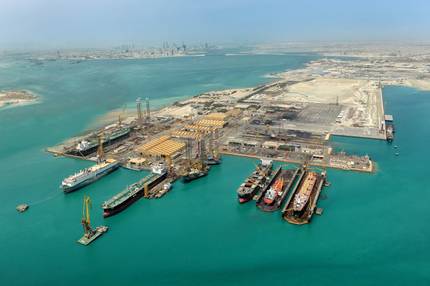EIA: Short-Term Energy Outlook
World Oil Markets
Average crude oil prices for July were little changed from June. The West Texas Intermediate (WTI) spot average for July was $30.75 per barrel compared to $30.66 in June. EIA’s Outlook is for prices to remain firm through the rest of 2003, or at least until autumn, when OECD oil inventories may rebuild above observed 5-year lows. Once inventories have been rebuilt, WTI oil prices may slide gradually to $26 per barrel during 2004, as Iraqi oil exports return to near pre-war levels.
U.S. Natural Gas Markets
At the end of July, working gas in storage is estimated (based on data through July 25) to have been about 17 percent below end-of-July 2002 levels and about 9 percent below the previous 5-year average. This would be a solid gain in storage levels and bolsters the chance that natural gas inventories may return to normal by the start of the heating season. The average wellhead price of natural gas for the third quarter is now projected to be $4.63 per thousand cubic feet, about 10 cents below the average expected for the July to September period in last month’s report. A good chance exists for spot prices for natural gas at the Henry Hub to remain below $5.00 per million Btu for the remainder of the summer.
World Oil Markets International Oil Supply
In July, OPEC 10 oil production (excluding Iraq) stabilized at an estimated 25.6 million barrels per day, 0.1 million barrels per day below June levels and only 0.2 million barrels per day above the OPEC production targets that took effect June 1. OPEC kept its production targets unchanged at its July 31 meeting, noting that oil prices were within OPEC’s target range and that the market was stable and well supplied.
Non-OPEC production is expected to grow by 1-1.3 million barrels per day in 2003 and 2004, exceeding the 0.9 million barrels per day growth seen in 2002. Most of this growth is expected to come from Russia and the Caspian Sea region, with supplies from these countries expected to increase by over 700,000 barrels per day in 2003.
International Oil Demand
World oil demand is projected to grow more than 1 million barrels per day in 2003. About one-eighth of this growth is projected to come from the U.S., with China and other non-OECD countries projected to provide an additional 0.5 million barrels per day of total demand growth.
Crude Oil Prices
Average crude oil prices for July were little changed from June averages. In July, the West Texas Intermediate (WTI) spot average price was $30.75 per barrel compared to $30.66 in June. EIA’s Outlook projects that prices will remain firm throughout the rest of 2003, even with the expected large increases in non-OPEC oil supplies, largely because of the tight OECD commercial inventory situation. Until these inventories are rebuilt above observed 5-year lows, which is not expected to occur until autumn, WTI oil futures prices should remain near current levels, then gradually slide to $26 per barrel during 2004, as Iraqi oil exports return to near pre-war levels next year.
If Iraqi exports do increase at the target rates set by the Iraqi Ministry of Oil, there would be downward pressure on prices. However, OPEC continues to monitor the situation in Iraq and could reduce its own production at its September 24th meeting. In short, prices are expected to fall only if OPEC fails to cut back its production to accommodate any Iraqi increases, which may not happen unless OPEC members become more interested in obtaining higher quota allocations than in maintaining high crude oil prices. EIA’s low price case, where WTI prices fall to between $15-$20 per barrel in 2004, also depends on continued high OPEC production through next year.
U.S. Energy Prices
Motor Gasoline: Motor gasoline prices (U.S average regular, self service) have been fairly stable over the past month, moving up or down by just a few cents per gallon from week to week. This pattern contrasts sharply with the price behavior exhibited earlier in the driving season, when pump prices fell for 10 out of 11 weeks after hitting a record price of nearly $1.73 per gallon on March 17. By the end of July, gasoline inventories were just below the 5-year min/max range. The latest weekly survey by EIA puts the average regular price at $1.54 per gallon. Pump prices, which have moved up some lately, are expected to remain close to current levels over the next two months, then begin to decline as the driving seasons ends. In 2004, the annual pump price is projected to average $1.43 per gallon (down nearly 10 cents per gallon from the projected 2003 average), as crude oil prices decline and refiner and retail margins ease slightly.
The current price of regular motor gasoline in California of $1.71 per gallon is about 20 cents per gallon higher than the national average price of $1.52 per gallon. The price difference between California and the nation as a whole has narrowed considerably since April, when the disparity reached 45-50 cents per gallon. In the beginning of the driving season, unexpected refinery shutdowns and the phase-out of MTBE, which is being replaced by ethanol in California gasoline, created supply problems and raised prices state-wide. The transition from MTBE to ethanol created two essentially incompatible distribution systems, which exacerbate the tight gasoline market. However, recent market supply adjustments and improved economies of scale in the refining and blending process have narrowed the price differences. Distillate Fuel Oil (Diesel Fuel and Heating Oil): Diesel fuel oil prices, like motor gasoline prices, have also stabilized over the past month. Prices will likely increase as the heating season approaches, but only by a modest amount. Residential heating oil prices, on the other hand, will be affected by seasonal demand for heating oil. Prices for this fuel should rise at the end of the summer, averaging about $1.29 per gallon during the 2003/2004 winter, comparable to the $1.31 price seen last winter. At the end of July, distillate fuel oil inventories reached 119 million barrels, a level slightly over the lower band (117 million barrels) of the 5-year min/max range.
Natural Gas: Two months of relatively mild weather across much of the country has depressed natural gas spot prices. As cooling demand declined, thus reducing the need for natural gas for electricity generation, historically high levels of natural gas were injected into underground storage facilities. Cash prices at the Henry Hub, which had hovered considerably above $5 per million Btu on a monthly basis since the beginning of the year, fell below $4.70 per million Btu during the last week in July. Only two months ago that price topped $6 per million Btu.
For the end of July, working gas in storage is estimated (based on data through July 25) to have been about 17 percent below end-of-July 2002 levels and about 9 percent below the previous 5-year average. The chance of reaching a normal level by the beginning of the heating season now looks good. One factor that could slow down progress toward reaching that goal would be a hot remainder of the summer, particularly in the Western and South Central regions, where natural gas is heavily used in the electric utility sector to meet cooling demand. In this case, additional pressure on marginal gas prices could be expected. In fact, occasional sharp price increases might occur as the difficulty of building adequate storage increases. However, assuming normal weather and taking into account the recent accelerated buildup in storage, spot prices in the $5.00-$5.60 per million Btu range are not expected until December or January. For all of 2003, wellhead prices are projected to average about $2.00 per thousand cubic feet above the 2002 annual average, or just under $5.00 per thousand cubic feet. For 2004, average annual wellhead prices are projected to ease by about 16 percent, as supplies are expected to remain sufficiently strong to return storage levels to within normal bounds, assuming normal weather. Although we have revised our wellhead price forecast downward from the previous Outlook due to the recent high volumes of injections, it should be noted that a prolonged period of colder-than-normal weather in October and especially November could tighten the market enough to send prices above $6.00 per thousand cubic feet.
U.S. Oil Demand
Total 2003 petroleum demand is projected to increase by close to 150,000 barrels per day, or 0.7 percent, to 19.91 million barrels per day. Individual product patterns, however, are expected to vary widely. Demand for motor gasoline, the largest oil-based product, is projected to increase by 0.7 percent for the year as a whole. Year-over-year increases in the second half are projected following the year-over–year declines in the first six months. This year-over-year increase in demand in the second half of the year is in response to the economic recovery.
Jet fuel markets, which were negatively affected by both the SARS epidemic and the Iraqi campaign, are likely to remain sluggish for the rest of the year. Available travel and capacity data show no growth thus far, a trend that is expected to continue throughout the rest of the year. On the other hand, distillate fuel oil is projected to increase 3.9 percent this year, buoyed by the harsh weather during the first quarter. Transportation demand, the largest distillate component, is projected to increase 2.9 percent this year. Residual fuel oil demand, bolstered by high space-heating demand during the first quarter and relatively high natural gas prices throughout the year, is projected to register an increase of 7.4 percent. Despite the colder-than-average winter, liquefied petroleum gas demand is projected to decline substantially for the year as a whole, largely as a result of weakness in petrochemical activity and high natural gas prices.
In 2004, growth in total petroleum demand is projected to reach 440,000 barrels per day, or 2.2 percent growth, to average 20.35 million barrels per day. All the major products (except residual fuel oil) are expected to contribute to that growth. The acceleration reflects not only a general improvement in economic conditions but also a belated recovery in jet fuel and liquefied petroleum gas demand from the low levels of 2003. Jet fuel demand, having declined two years in a row, will likely grow at a rate of 1.6 percent to an average 1.58 million barrels per day, which is still below the 2001 average. Distillate demand growth is projected to moderate to 1.9 percent as year-to-year shifts in weather patterns partly counteract the acceleration of demand growth in the transportation sector. Residual fuel oil deliveries, which grew last year, are projected to retrench by more than 12 percent, reflecting the assumptions of normal weather and greater competition from natural gas, whose prices are projected to decline throughout the forecast interval. Liquefied petroleum gas is expected to recover smartly from the weaknesses of the previous year, exhibiting growth of 7.8 percent. Growth in both petrochemical activity and declines in natural gas feedstock prices are both expected to offset the year-to-year decline in weather-related space-heating demand.
Oil Supply
Average domestic oil production in 2003 is expected to increase by about 62 thousand barrels per day, or 0.9 percent, to a level of 5.80 million barrels of oil per day. For 2004, a 0.4 percent decrease is expected, resulting in an average production rate of 5.77 million barrels of oil per day for the year. Lower 48 States oil production will likely increase by 62 thousand barrels per day to a rate of 4.82 million barrels per day in 2003, followed by a slight increase of about 10 thousand barrels per day in 2004. Oil production from the Mars, Mad Dog, Na Kika, Ursa and Dianna-Hoover Federal Offshore fields is expected to account for about 7.9 percent of the lower-48 oil production by the fourth quarter of 2004.
Alaska is expected to account for 16.4 percent of total U.S. oil production in 2004. Alaskan oil production is expected to decrease by 1.0 percent in 2003 and decrease by 2.8 percent in 2004. The combined production rate from the two significant satellite fields, Alpine and North Star, averaged nearly 170 thousand barrels per day during May 2003. Production from the Kuparuk River field plus like production from West Sak, Tabasco, Tarn and Meltwater fields is expected to stay at an average of 210 thousand barrels per day in 2003 and 2004.
Natural Gas Supply and Demand
Natural gas demand is expected to rise by 0.6 percent in 2003 due in part to the sharply higher weather-related demand during the first quarter of 2003. The decrease in consumption projected for 2004 due to the reversal of weather effects (under the assumption of normal weather) is offset by a slight increase in industrial consumption in response to the somewhat lower prices and higher industrial output in 2004.
Demand for natural gas this summer is expected to be 1.7 percent lower than last summer’s level, due largely to the effect of higher prices on the industrial and electricity-generating sectors. Also, cooling degree-days for the season (Q2 2003 and Q3 2003) under our assumption of normal weather would be about 15 percent below year-ago levels, resulting in slight year-over-year declines in electric power sector demand. Summer natural gas wellhead prices are projected to be 40 percent higher than last summer. In the event of a hotter-than-normal weather for the remainder of the summer, natural gas prices could go higher, as expanded natural gas-fired electric generation to meet cooling demand would compete with the need to build storage inventories.
Working natural gas in storage stood at about 2.1 billion cubic feet (Bcf) at the end of July, 17 percent below the year-ago level. This marks a strong improvement in the storage situation from 2 months ago. Still, the need for relatively large volumes of natural gas to refill working gas storage in 2003 remains, and this means that relatively high price volatility can be expected to continue. Nevertheless, a definite improvement in the supply situation has occurred and the probability of reaching adequate storage levels by November has risen. Natural gas production is expected to increase by about 3 percent this year. High natural gas prices and sharply higher oil and natural gas field revenues are driving the resurgence in natural gas-directed drilling activity this year following the downturn in 2002.
Monthly oil and natural gas field revenues are expected to continue to average over $400 million this year. The prospects for significant reductions in natural gas wellhead prices over the forecast period from the current high levels could hinge on the productivity of the expected upsurge in drilling in terms of expected output. An average natural gas wellhead price of about $4.07 is projected for 2004, partly based on our belief that natural gas production will rise modestly in 2003 and remain close to improved levels in 2004.
Source: Department of Energy, Energy Information













